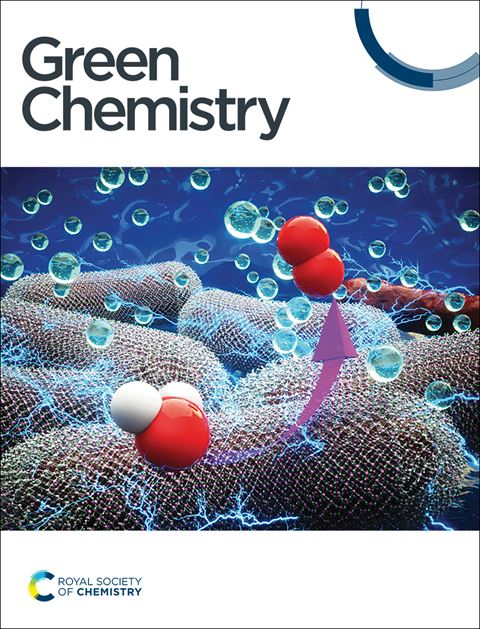Electrochemical α-hydroxylation of aryl ketones with methanol as the oxygen source†
IF 9.3
1区 化学
Q1 CHEMISTRY, MULTIDISCIPLINARY
引用次数: 0
Abstract
Selective hydroxylation of Csp3–H bonds is challenging but highly valuable. This report describes electrochemical α-hydroxylation of aryl ketones under mild conditions without transition metal catalysts or oxygen gas; methanol serves as the oxygen source for preparing a series of compounds. Using deuterated methanol leads to α-deuterohydroxylation in a single step, thus offering a convenient isotope labeling approach. This method can be applied to effectively hydroxylate secondary Csp3–H bonds. Mechanistic investigations confirm methanol as the oxygen source, and scale-up experiments highlight the practical applicability of this reaction.
以甲醇为氧源进行芳基酮的电化学α-羟基化反应†。
本文章由计算机程序翻译,如有差异,请以英文原文为准。
求助全文
约1分钟内获得全文
求助全文
来源期刊

Green Chemistry
化学-化学综合
CiteScore
16.10
自引率
7.10%
发文量
677
审稿时长
1.4 months
期刊介绍:
Green Chemistry is a journal that provides a unique forum for the publication of innovative research on the development of alternative green and sustainable technologies. The scope of Green Chemistry is based on the definition proposed by Anastas and Warner (Green Chemistry: Theory and Practice, P T Anastas and J C Warner, Oxford University Press, Oxford, 1998), which defines green chemistry as the utilisation of a set of principles that reduces or eliminates the use or generation of hazardous substances in the design, manufacture and application of chemical products. Green Chemistry aims to reduce the environmental impact of the chemical enterprise by developing a technology base that is inherently non-toxic to living things and the environment. The journal welcomes submissions on all aspects of research relating to this endeavor and publishes original and significant cutting-edge research that is likely to be of wide general appeal. For a work to be published, it must present a significant advance in green chemistry, including a comparison with existing methods and a demonstration of advantages over those methods.
 求助内容:
求助内容: 应助结果提醒方式:
应助结果提醒方式:


